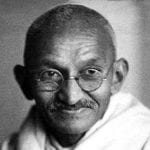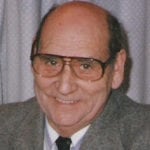 Creepy
Creepy  Creepy
Creepy  Technology
Technology 10 Scientific Breakthroughs of 2025 That’ll Change Everything
 Our World
Our World 10 Ways Icelandic Culture Makes Other Countries Look Boring
 Misconceptions
Misconceptions 10 Common Misconceptions About the Victorian Era
 Mysteries
Mysteries 10 Strange Unexplained Mysteries of 2025
 Miscellaneous
Miscellaneous 10 of History’s Most Bell-Ringing Finishing Moves
 History
History 10 Great Escapes That Ended Right Back in Captivity
 Weird Stuff
Weird Stuff 10 Fascinating Things You Might Not Know About Spiders
 Food
Food 10 Everyday Foods You Didn’t Know Were Invented by the U.S. Military
 History
History 10 Odd Things Colonial Americans Kept at Home
 Creepy
Creepy 10 More Representations of Death from Myth, Legend, and Folktale
 Technology
Technology 10 Scientific Breakthroughs of 2025 That’ll Change Everything
 Our World
Our World 10 Ways Icelandic Culture Makes Other Countries Look Boring
Who's Behind Listverse?

Jamie Frater
Head Editor
Jamie founded Listverse due to an insatiable desire to share fascinating, obscure, and bizarre facts. He has been a guest speaker on numerous national radio and television stations and is a five time published author.
More About Us Misconceptions
Misconceptions 10 Common Misconceptions About the Victorian Era
 Mysteries
Mysteries 10 Strange Unexplained Mysteries of 2025
 Miscellaneous
Miscellaneous 10 of History’s Most Bell-Ringing Finishing Moves
 History
History 10 Great Escapes That Ended Right Back in Captivity
 Weird Stuff
Weird Stuff 10 Fascinating Things You Might Not Know About Spiders
 Food
Food 10 Everyday Foods You Didn’t Know Were Invented by the U.S. Military
 History
History 10 Odd Things Colonial Americans Kept at Home
10 Bizarre Ways Athletes Tried To Cheat
Throughout history, people have always tried to find some way to cheat their way to glory without any effort, a quality that has caused numerous issues in sports. Humans have been enjoying sports for thousands of years, and players have always tried to take the easy path to victory. Many cheats have been identified over the years and are recognizable by most officials, but some are more elaborate. Over the years, bizarre cheats have been used that still shock people today.
10 Abortion Doping

Abortion doping is one of the most disturbing forgotten techniques used by East German sports officials to prepare female athletes for the Olympics. There has been great controversy since rumors about abortion doping first surfaced. Some believe that it’s nothing more than a particularly dark urban legend, while others say that it was a very real technique.
East German female athletes were treated very poorly in the name of sports. Their coaches would use every method to achieve victory at the risk of the athlete’s health. Steroids were given to athletes without their permission, but possibly the most horrifying method used was abortion doping. To this day, it’s unknown if abortion doping was ever actually used to improve athletes’ performances, but it was acknowledged by the Olympics in 1988. It was theorized that the increased hormones and physical effects from a pregnancy could actually help a female athlete, even if the baby had been aborted beforehand. The only person to actually speak about abortion doping in the Olympics was Prince Alexandre de Merode of Belgium, former vice president of the International Olympic Committee. He claimed to know Eastern European athletes who had been artificially inseminated and then had their pregnancies terminated after a few months for the purpose of better sports results.
The rumors of abortion doping may have been born after steroids caused multiple issues with pregnancies during the 1970s and 1980s. Anabolic steroids were fed to female athletes, giving them masculine features and wreaking havoc on their anatomy. Babies were born with severe defects, and some athletes had miscarriages due to the steroids they were given. Whether or not the rumors about abortion doping are true, it’s terrifying to think what lengths athletes (or coaches) will go to for a win.
9 Boris Onischenko’s Magic Epee
Like East Germany, the Soviet Union was well-known for the liberties they would take to get the gold. The methods that they employed were often quite elaborate, as was the case with Boris Onischenko. Onischenko was one of the most prominent athletes in the world. In 1972, he was a three-time pentathlon champion and had been on the winning Soviet pentathlon team. He was a national celebrity, but a scandal in 1976 would change everything for him.
At the age of 38, Boris Onischenko was an older athlete by the Montreal Olympics in 1976. An excellent fencer, he blew his competition out of the water. It soon became increasingly clear, however, that there was no way that Onischenko could have won as a brilliantly as he did. The coaches of the Great Britain pentathlon team began to wonder what was going on. They had an expert examine the epee that Onischenko was using. After extensive observation, the expert said that there was nothing wrong with it. Onischenko then fenced Jim Fox, and an observation by Fox would expose Onischenko’s deceit. During the match, Onischenko lunged at Fox, who successfully dodged his attack. Despite Fox evading the attack, a point was given to Onischenko. Fox was confused; neither of them had actually scored a point.
After Onischenko handily defeated Fox, Fox went to the Olympics committee and had them examine Onischenko’s epee. They went through every last portion of the epee and made a shocking discovery. Inside the handle, intricate electrical wiring was found that created a system by which Onischenko could win. The system worked when pressure was applied. The pressure would cause the device to give a point to Onischenko without actually making a hit. After an investigation, officials decided that Onischenko had cheated and gave the win to Great Britain’s team.
8 Spain Paralympics Scandal
In 2000, Spain won the gold medal in basketball in the Paralympics. This should have been an inspirational story about athletes overcoming their disabilities to achieve something great, but it soon became clear that the win was nothing short of cheating on the part of the Spanish team. The players were supposed to have mental handicaps; instead, most had no mental deficiencies whatsoever.
Carlos Ribagorda was one of the players on the 2000 winning team. After he won the gold, he started working as a writer with a business magazine and later even published a book. As it became more clear that he had no handicaps, he agreed to give back his gold medal and explained to the Paralympics Committee what had occurred. He was just one of 10 others who had no disabilities but were put on the 12-player team. The revelation shocked many who thought that no one would go as far as to cheat in the Paralympics.
Soon, it became clear that cheating had occurred in even more events: Two Spanish swimmers were found to have no disabilities along with a table tennis player. Further investigations revealed that the Russians also cheated. The Paralympics Committee soon began to blame Fernando Martin Vicente, who founded the National Association of Special Sports in 1975. He had a disabled son, so it seemed that his actions were out of kindness, but as the events became bigger, he began to make millions from them. After the corruption was uncovered, Vicente was forced to resign.
7 Rosie Ruiz Fakes The Race
In 1980, Rosie Ruiz handily won the 1980 Boston Marathon. It was an impressive feat. She won in record time—little more than two and a half hours. When she was crowned the winner of the marathon, she was hardly sweating despite having run 26.2 miles. Her hair was perfectly styled, and she wasn’t flushed like the rest of the runners. For many who saw Ruiz at the end of the race, nothing made sense for a good reason: She hadn’t run at all.
While the judges were suspicious of Ruiz because of her appearance, they initially gave her the win. Then, both spectators and competitors testified that they had never seen Ruiz running in the race. Some even testified that she was seen on the sidelines. Ruiz fed the judges’ doubts even further when she said she had only been training for 18 months by running in Central Park. She had been in one other race—the New York Marathon, for which she had a similarly impressive and possibly dubious performance. Kathrine Switzer, the first woman to run the Boston Marathon and a famous runner in her own right, was covering the marathon on television. When she interviewed Ruiz, she began to have doubts about her victory. She asked Ruiz what her intervals had been, to which Ruiz responded by asking what intervals were.
It became increasingly clear that Ruiz was not an experienced runner in any way. In the New York Marathon, Ruiz finished in 24th place. It was revealed that she had done so by cutting out and traveling by subway to the finish line. She used a similar strategy of cutting out and taking shortcuts to win the Boston Marathon. It was also discovered that she lied to get into the New York Marathon. When she submitted her application past the deadline, she claimed special dispensation by saying she had a “fatal brain tumor.” She was stripped of her title but faced no criminal charges. Later on, however, she began to have trouble with the law. In 1982, she was charged with stealing $60,000 from the company she worked for and was arrested in 1983 for selling 2 kilograms (4 lb) of cocaine to undercover officers.
6 Tom Williams’s Fake Blood
In 2009 during rugby’s Heineken Cup Match, there appeared to be no way that the Harlequins could win against Leinster in the quarterfinal. Then, Tom Williams was taken off the field because his mouth appeared bloody, but no injury seemed to have occurred. Nick Evans, the Harlequins’ best kicker, was taken back onto the field. Leinster won the game anyway, but there were questions about Tom Williams’s injury.
Because of Leinster’s win, they weren’t allowed to examine Williams to see if his injury was legitimate. Nevertheless, it was soon discovered that Williams had not been injured; he had actually taken a blood capsule from his sock during the 69th minute. Six minutes later, he put the capsule into his mouth and bit it, causing his “injury.” Professor Arthur Tanner, the Leinster club doctor, was initially suspicious of the injury and tried to follow Williams but was prevented from examining him. Dr. Wendy Chapman, the Harlequins’ club doctor, was told to cut Williams’s lip so it would appear that his injury was legitimate.
The scandal became known as “Bloodgate” and shocked the rugby community. Dean Richards, the director of the Harlequins, was banned for three years by the ERC and was fined £259,000. Tom Williams was given 12 months, but the ban was shortened to four after he admitted to using the capsule.
5 Sylvester Carmouche Uses Fog To His Advantage

January 11, 1990, was a foggy day in Louisiana, and very few went to the racetrack that day. Because of the foggy conditions, the audience could hardly even see the horses. Sylvester Carmouche really wanted to win with his horse, Landing Officer, and the weather conditions gave the idea to him to try to cheat in one of the most audacious racing scandals of all time. When the race started, all nine of the horses went off into the fog. In a surprising finish, Landing Officer dashed ahead of the competition and won the race. The odds of Landing Officer winning were 23–1, so anyone who bet on him happily went off to collect their enormous winnings.
Then, the protests lights went up, and it became clear that something was very wrong. Videos of the track only showed eight of the nine horses. Landing Officer was missing. Officials began to claim that Carmouche led Landing Officer into the fog and then stopped him so that he could appear to have a fantastic finish later on. Carmouche denied this and said that Landing Officer was just very fast that day.
A veterinarian examined Landing Officer and found that he wasn’t sweating, wasn’t breathing hard, and his bandages were clean. The Louisiana Racing Commission looked into the controversy and decided that Carmouche had indeed cheated. He was banned for 10 years. This wasn’t the end of his troubles, though. Carmouche was charged with misdemeanor attempted theft of $50—the difference between the $140 that Carmouche received for winning and the $90 fee all the jockeys were paid. He was convicted and sentenced to 30 days in jail, of which 20 days were suspended, along with court costs and a fine of $250.
4 Manny Ramirez’s Female Fertility Drugs
Manny Ramirez revitalized the Dodgers franchise, which had long been mired in chronic losses. He became one of the best players in baseball history, resulting in fame and a huge salary from the Dodgers, but in 2004, a drug policy was instituted which would eventually be Ramirez’s downfall. In 2009, he was caught using female fertility drugs, which are used illegally in conjunction with steroids.
Ramirez claimed that the drugs had been prescribed by a doctor for a “personal issue.” He said that the doctor told him that the drugs shouldn’t have been an issue. However, he never disclosed the doctor’s name, the health issue, or the name of his medication. The medication was identified as human chorionic gonadotropin (HCG), which has been legitimately prescribed to men who don’t produce enough testosterone. HCG can also restore testosterone after steroid use, which suggested that Ramirez had been using steroids in the past. A quick call to a league hotline would have shown that drug was banned, and players who are shown to legitimately need certain drugs for hormone issues can get therapeutic exemptions, but none of these steps were taken by Ramirez. Ramirez was given a 50-game ban, which cost him $7.7 million.
3 Onterrio Smith’s ‘Whizzinator’
In 2005, Minnesota Vikings running back Onterrio Smith was caught at an airport with an unusual device. Identified as “The Original Whizzinator,” the device consisted of a kit which contained dried urine, capsules to clean the device, and even a prosthetic penis. The device was marketed as a way to beat drug tests. While the airport alarms were set off by a bottle of toothpaste, and he was allowed to go on with his flight, many began to wonder just why Smith had the device in the first place.
Smith claimed that he was taking the device to his cousin, but there was considerable evidence that he may have been using the device for himself to pass drug tests. He’d had considerable trouble with failing drug tests in the past: There were already two strikes on his record, including a four-game suspension for marijuana. According to the league, his possession of the device could be considered a violation against the policy of altering urine samples.
An NFL inquiry was opened up over the issue, but until they made a ruling, Smith returned to practice. Many tried to help Smith, including Vikings quarterback Daunte Culpepper, who said about him: “Onterrio, I love him like a brother. [ . . . ] I just tell him, ‘You just have to be straight man. You always have to think before you react and make decisions.’ ” After an investigation, it was determined that Smith had indeed violated the NFL’s policy, and he was suspended for the entire 2005 season.
2 Ben Johnson And The Dirtiest Race In History
Ben Johnson was a beloved athlete from Jamaica who moved to Canada and began to compete there as a runner. In 1988, he was selected to compete in the 1988 Seoul Olympics. An ordinary 100-meter final became quite extraordinary when Ben Johnson beat the world record, but it became clear that he had cheated by using banned steroids. However, it wasn’t just Johnson who had been doping; the majority of the runners in the race were found to be doping also.
Many of the runners were edgy that day, and Johnson was the last one on the field. When the race began, Johnson blew everyone else out of the water, winning the 100-meter in only 9.79 seconds—a world record. After the award ceremony, Johnson spoke to the journalists who still couldn’t believe what had occurred: “I’d like to say my name is Benjamin Sinclair Johnson Jr., and this world record will last 50 years, maybe 100. [ . . . ] A gold medal—that’s something no one can take away from you.”
As it turned out, they did take the medal from him. When Johnson was given a drug test, he failed by testing positive for stanozolol, a banned steroid drug. That wasn’t the end of the story, though. Six of the eight finalists in the 100-meter race would test positive for doping during their career, a fact that has led writers to dub the Seoul 100-meter final “the dirtiest race in history.” While doping was officially banned by the Olympics at the time, it was hardly regulated as fiercely as it is today. The huge publicity from Ben Johnson’s doping scandal in 1988 led to the Olympics finally cracking down on doping with rigorous testing and harsher rules.
1 Panama Lewis’s Black Bottle
In 1982, Aaron Pryor was boxing Alexis Arguello, and it seemed quite clear who would win. For the first several rounds, Arguello pounded Pryor, who was soon so worn out and beaten that he felt he could no longer fight. Panama Lewis, Pryor’s trainer, wasn’t going to let his fighter lose. Lewis gave Pryor a black bottle to drink from. After downing the concoction, Pryor bounced back and won the fight.
No one knew what had occurred. Pryor came back from certain defeat and pummeled his opponent, but many wondered what exactly was in Lewis’s black bottle. People began to wonder whether or not Pryor had cheated. There were questions about what was in the black bottle, but Lewis claimed that the bottle was gone, so there was no way to perform an analysis of the chemicals in the mixture. He claimed that his mixture was nothing more than Perrier water, which he used to soothe Pryor’s stomach.
This explanation only created further scrutiny. Some began to claim that the black bottle mixture was a compound made with cocaine. Luis Resto, a boxer who trained with Lewis, claimed that he had been given a similar mixture, but that it was nothing more than an antihistamine, which would allow for increased lung capacity during fights. There were even theories that Lewis had given an ammonia capsule to Pryor. Because there was no sample, there was no way to prove that Lewis had cheated. To this day, rumors continue to claim that Lewis cheated by giving his boxer illegal stimulants.
Gordon Gora is a struggling author who is desperately trying to make it. He is working on several projects but until he finishes one, he will write for Listverse for his bread and butter. You can write him at [email protected].








